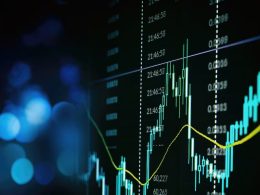by Eric Winograd, Senior Economist—United States, AllianceBernstein
The onslaught of the coronavirus forced the Federal Reserve and lawmakers to take desperately needed measures. The US economy will eventually recover, but the effects of these drastic policy decisions will be felt for a long time.
Since the onset of the COVID-19 crisis, both the Federal Reserve and fiscal policymakers have rolled out unprecedented measures to support the financial system and US economy, including the $2 trillion CARES Act passed in late March and the Fed’s use of broad fiscal-like powers.
Necessary Policy Moves…but with a Cost
These moves had to happen, in our view, and so will more moves to come in the next few weeks. The swift and expansive action is helping ease the human cost of the crisis, including reinforcement of a strained healthcare system, help for people who have lost their jobs, aid for struggling companies and support to keep financial markets functioning.
All of these measures ease the pain and lay the groundwork for an eventual recovery. But the benefits of these massive programs don’t come without cost, and the bill will ultimately come due. While some of the policy responses are temporary and will be reversed in time, other components will be long-lasting, with a profound influence on the US economy and markets for years to come.
The Fed’s Balance Sheet Likely to Double by Year End
The Fed has operated through two channels in this crisis. We’ve paid the most attention to the liquidity channel—a veritable alphabet soup of programs to keep markets from freezing up. But those temporary liquidity programs have been accompanied by a massive—and long-lasting—expansion of the Fed’s balance sheet through buying Treasury and mortgage-backed securities.
This latest version of quantitative easing is open-ended and all but certain to be bigger than those before it. In fact, we expect the Fed’s balance sheet to swell to nearly $10 billion—which is more than double its pre-crisis size—by year-end. The Fed won’t allow interest rates to climb because it would crimp the recovery.
Growing Government Debt…and Collapsing Tax Revenues
The Fed’s balance sheet isn’t the only thing growing: the US government’s debt load will expand, too. The government has to spend in order to set the table for an eventual economic recovery. And with tax revenues collapsing with the economic shutdown, the budget deficit will skyrocket. We expect higher tax rates and more progressive tax policies to play a role in financing the government over time.
Even so, the scale of the deficits will inevitably require more debt financing—a lot more. We expect the government’s debt/GDP ratio to be north of 100% in short order, and it’s likely to stay high. That means a lot more Treasury bond issuance, and, with the higher interest rates go, the higher the bill for servicing that debt will be.
A New Era of Policymaking Joined at the Hip
In short, we expect the Treasury to issue more debt than ever before—and for the Fed to buy more of it than ever before, as it presses to keep interest rates low. If this sounds like debt monetization, that’s because it is, more or less. Policymakers won’t describe it that way of course. They’ll emphasize—correctly—that its programs are designed to bolster the economy and keep financial markets functioning.
But the net impact is the same, regardless of how the programs are characterized. We’ve moved into a new era for policymaking in which fiscal and monetary policy are joined at the hip. The US economy and government can’t afford higher interest rates, and the Fed will do whatever it takes to avoid them.
An Eventual Reckoning—and Hard Decisions
This isn’t a new phenomenon. We’ve been making the case for some time that populist pressures are pushing policy in this direction. The crisis has accelerated the timetable, and we’ve reached the destination sooner than expected. History generally isn’t kind in rendering its verdict when central banks monetize government debt. Economic outcomes tend to be worse, with less efficient growth and higher inflation.
That isn’t a meaningful near-term risk. Inflation won’t rise while the US economy is still in deep distress. But policymakers will have to face it eventually. Long after economic activity recovers, policymakers will be forced to confront the lasting scars from unprecedented policy actions.
Eric Winograd is a Senior Economist at AllianceBernstein (AB).
The views expressed herein do not constitute research, investment advice or trade recommendations and do not necessarily represent the views of all AB portfolio-management teams.
This post was first published at the official blog of AllianceBernstein..












